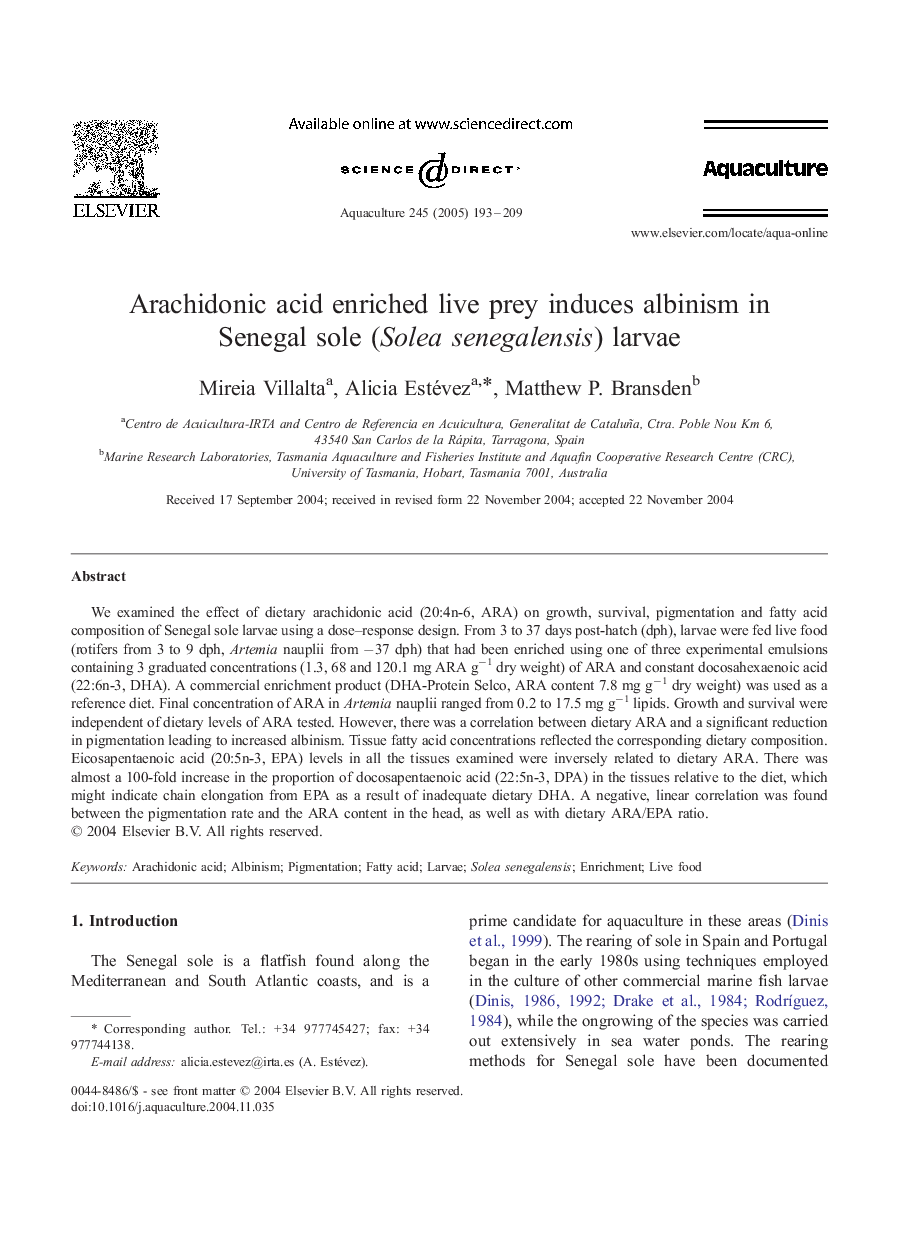| Article ID | Journal | Published Year | Pages | File Type |
|---|---|---|---|---|
| 8974788 | Aquaculture | 2005 | 17 Pages |
Abstract
We examined the effect of dietary arachidonic acid (20:4n-6, ARA) on growth, survival, pigmentation and fatty acid composition of Senegal sole larvae using a dose-response design. From 3 to 37 days post-hatch (dph), larvae were fed live food (rotifers from 3 to 9 dph, Artemia nauplii from â37 dph) that had been enriched using one of three experimental emulsions containing 3 graduated concentrations (1.3, 68 and 120.1 mg ARA gâ1 dry weight) of ARA and constant docosahexaenoic acid (22:6n-3, DHA). A commercial enrichment product (DHA-Protein Selco, ARA content 7.8 mg gâ1 dry weight) was used as a reference diet. Final concentration of ARA in Artemia nauplii ranged from 0.2 to 17.5 mg gâ1 lipids. Growth and survival were independent of dietary levels of ARA tested. However, there was a correlation between dietary ARA and a significant reduction in pigmentation leading to increased albinism. Tissue fatty acid concentrations reflected the corresponding dietary composition. Eicosapentaenoic acid (20:5n-3, EPA) levels in all the tissues examined were inversely related to dietary ARA. There was almost a 100-fold increase in the proportion of docosapentaenoic acid (22:5n-3, DPA) in the tissues relative to the diet, which might indicate chain elongation from EPA as a result of inadequate dietary DHA. A negative, linear correlation was found between the pigmentation rate and the ARA content in the head, as well as with dietary ARA/EPA ratio.
Related Topics
Life Sciences
Agricultural and Biological Sciences
Aquatic Science
Authors
Mireia Villalta, Alicia Estévez, Matthew P. Bransden,
